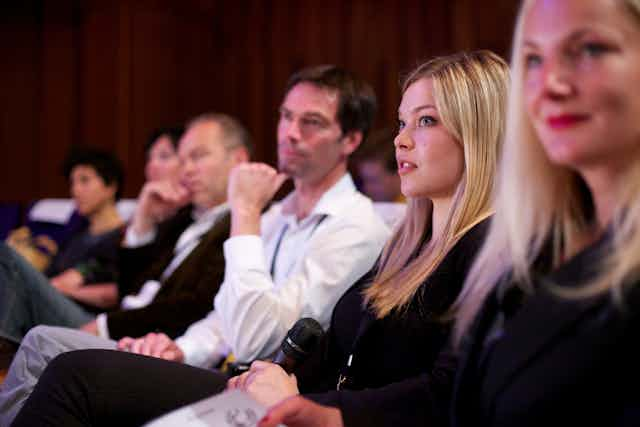New thinking about creativity abounds: its importance and its complexities across areas as diverse as psychology, economics, engineering and design continue to draw the attention of researchers and theorists.
There’s a certain irony to the fact that creativity research has generated such a dizzying range of approaches – a kind of an occupational hazard of creativity research so to speak. But in spite of, and perhaps because of, this, creativity as a discipline has continued to expand over the past 50 years.
Where once the focus was on the individual as a creative “genius”, the creativity of social groups is now being explored as well as, creativity at work, across cultures and in broader political systems.
Creativity can be conceptualised as both a process and an outcome. There’s no one-size-fits all definition. The term is typically defined in the context of the field of interest – whether that’s the creativity of products, the creative individual, the creativity of groups, or something else.
While the field of creativity has expanded over time, the area of organisational creativity has experienced an especially large increase over the past 30 years.
From almost no research in the 1970s to now having several established academic journals, such as Creativity and Innovation Management and Business Creativity and the Creative Economy, organisational creativity looks at characteristics of individuals, jobs, and work environments that improve creative performance.
The area has become increasingly popular in part from its association with innovation: DESC Teresa Amabile describes creativity as the raw ingredient needed for organisation innovation.
Creativity is credited with providing the capability for organisations to generate unique intellectual property, unique methods and processes – and ultimately a competitive advantage.
How it happens
But intelligence doesn’t equal creativity. There has been a large interest in understanding how an individual creates or comes up with something new.
A good idea or new insight into a problem appears to arise by chance as an “ah-ha” moment, it is not a spontaneous process. A range of cognitive processes and strategies are used separate to traditional intelligence.
Intelligence and creativity have a complex relationship. In some studies intelligence is correlated with creativity and in some it’s not: it depends on the measure of creativity used.
In short, highly intelligent people can still be uncreative, so the question is first whether an individual “can be creative” and then whether they “will be creative”. Being internally motivated towards the task at hand, and being encouraged by others for creative input, for example, are important stimulating influences on creative performance at work.
So if it’s not intelligence driving creative performance, what is?
To create a new solution you need to define a new problem. The ability of an individual or team to conceptualise and understand a problem in a new way is one of the most important first steps in the successful creation of a new solution.
Constructing a problem more deliberately results in more creative solutions being generated. In many organisations, this leads to a paradox. Why? Organisations are set up to deliver on outcomes.
They tend to be good at the elimination of options, as they are geared to develop processes that eliminate uncertainty. Time to conceptualise a problem in contrast to the time set aside to conceptualise solutions is often very different.
Additionally, the role of expertise comes into play. The problems that organisations are encountering are becoming increasingly complex with increasingly ill-defined boundaries, multiple acceptable pathways and solutions.
It makes sense for organisations to tap into their more experienced individuals. The thing is, while experts tend to spend more time constructing problems, they also have many more “ready-made” solutions and may be more likely to rely on tried and tested approaches. That’s especially the case when organisational processes, systems and culture reward the elimination of uncertainty and risk.
Novices, on the other hand, spend more time trying to solve ill-defined problems.
That’s why team-based approaches to creativity at work are important.
What is a creative team?
A creative team is different to a traditional team.
Teams that successfully produce creative outcomes often have higher levels of conflict, are more heterogeneous, have higher levels of functional diversity that traditional teams. As such, the leadership skills required to build, nurture and support creativity in teams extend beyond many of the traditional leadership skills.
Defining a new problem relies on each member of the team shifting their understanding to come to a new agreed consensus. The constructive conflict and debate involved in this process, and which is characteristic of successful creative performance in teams, can easily be discouraged in favour of the desire for team harmony and consensus, or by leadership styles that are more directive in approach.
Overall, understanding creative performance at work warrants continued close examination. A large amount of government funding is channelled towards innovation support programs and a robust evidence base will be an imperative well into the future.
Having highly creative people is of little benefit without leaders who can mobilise and deploy resources to enable creative performance and without a culture that is supportive of these decisions.
Read other articles in our creativity series here.

